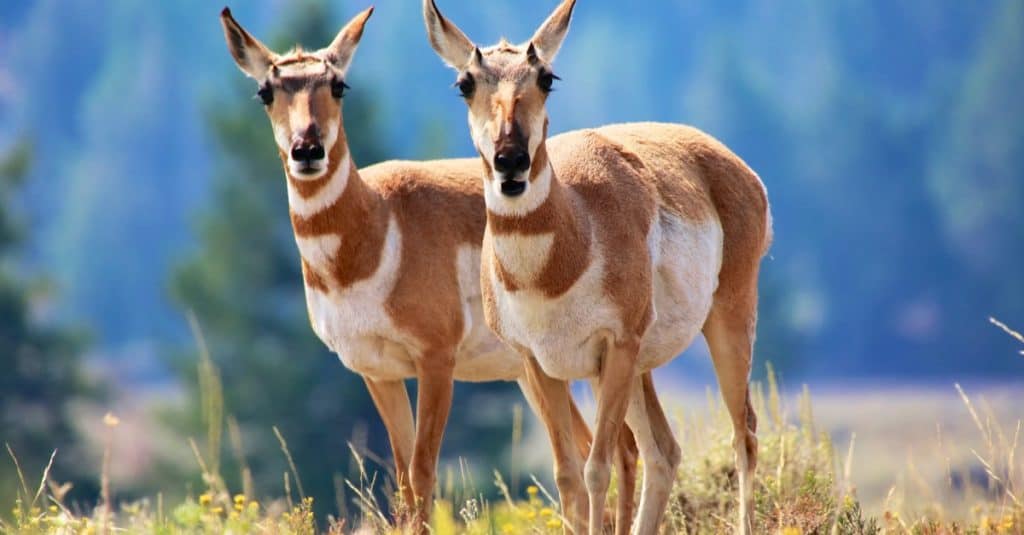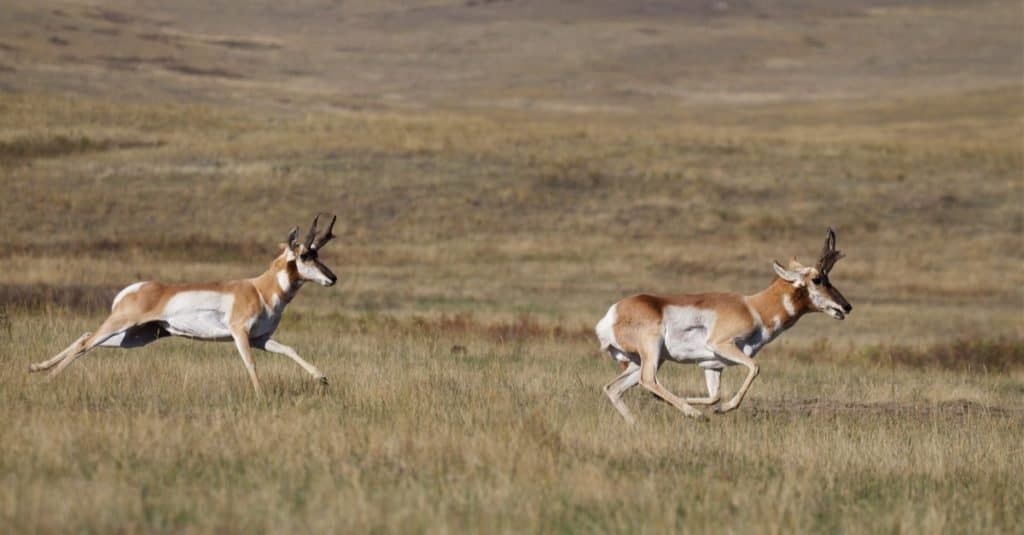The sage-covered hills of Colorado are a sporting and outdoor enthusiast’s paradise. Home to diverse wildlife, there’s something for everyone, novice and seasoned hunters alike. What makes Colorado ideal is that with its vast open spaces across 23 million acres of public land, you have endless choices in deciding where to roam.
Colorado is also home to the ever-elusive pronghorn, which even the most experienced hunters would agree that catching this antelope is a patience-testing experience.
Found only in North America, you can spy this large game species grazing on the wide-open grasslands and prairies in Colorado, Wyoming, Arizona, Montana, northeast California, southeast Oregon, Nevada, Utah, and New Mexico.
Although they might be easier to locate than elk and other animals, they’re difficult to capture. That’s because they move fast and have keen eyesight that scans for danger. The tiniest rustle or slightest flicker of movement will quickly spook them away and out of your shot.
In this article, you will discover the largest pronghorn ever caught in Colorado and this unique buck’s secretive nature and character.
Background on Pronghorns

Only three species of pronghorns were left when humans started populating North America 10,000 years ago.
©matthieu Gallet/Shutterstock.com
Pronghorns are the only surviving species of Antilocapridae, a group of animals that evolved over the past 20 million years in North America. There were approximately 12 species that existed during the Pleistocene period, and only three were left when humans began populating North America 10,000 years ago.
Before Europe colonized North America, the pronghorn population was abundant, numbering 30 to 40 million. Unfortunately, the settler’s arrival was marked by overhunting. On top of being hunted en masse, extreme habitat loss also threatened pronghorn survival, and by the early 1990s, they faced extinction.
Many conservation efforts were made to repopulate pronghorns. Interestingly, The Boone and Crockett Club, North America’s oldest fair chase hunting and habitat conservation organization, played a significant role in reversing the plight of the pronghorn. Today, the species have rebounded and are thriving in many places across North America.
Pronghorn Facts and Characteristics

Pronghorns are nearly as fast as cheetahs, reaching up to 60 miles per hour.
©Tom Reichner/Shutterstock.com
Pronghorns are interesting species of buck for various reasons. Below are some facts about these animals.
1. Fastest Mammal in the Western Hemisphere
Have you ever belly-crawled your way toward a group of pronghorn, only for them to sprint away faster than a blink of an eye?
Reaching up to 60 miles an hour, pronghorns are nearly as fast as the fastest cats on the planet – cheetahs. Pronghorns can outrun most of their predators because of their speed.
2. Masters of Endurance
Not only are they fast, but pronghorns are also known for their endurance – meaning they can sustain their fast speeds for longer.
They can cover vast distances of terrain – up to 160 miles per year, and have earned the title of “marathoners of the American West.”
3. Amazing Vision
The eyesight of pronghorns is comparable to looking through eight-power binoculars. This is why many hunters miss their chance to shoot a pronghorn. Seeing objects and detecting movement from great distances, the buck has exceedingly good vision. The best way to successfully catch a pronghorn is for you to see it before it sees you.
4. They Can Warn and Communicate With Each Other
When a pronghorn is fearful or senses danger, the long, white hairs on its rump stand up, alerting other herd members to a nearby threat.
What Is the Largest Pronghorn Ever Caught in Colorado?
According to Boone and Crockett Club state records, Bob Schneidmiller caught the largest pronghorn in 1965. Killed in Weld County in Colorado, the sizeable buck scored 91 4/8 inches. Over the decades, others have yet to beat Schneidmiller’s achievement.
The score references the horn length and mass, as well as the length of the prongs.
The beast’s horns measure 15 1/8 (right) and 15 2/8 (left) lengthwise – far longer than the average horn size of 12 inches. The buck also has long prongs covering a length of 7 0/8 (right) and 7 0/8 (left) inches, which is greater than the three-to-four-inch measurement of the average pronghorn.
Ranking second in Colorado is an 89 6/8 inches pronghorn caught in 1993 by Tracy L. Downare. The dimensions of the horns measure 18 2/8 (right) and 18 0/8 (left), while the prongs measure 6 ⅝ (right) and 6 2/8 (left).
What Is the Largest Pronghorn Ever Caught in the World?
In 2013, Mike Gallo captured a massive pronghorn that clocked in at 96 4/8 inches, making this the largest buck of its kind ever caught.
Gallo, from Socorro County, New Mexico, achieved the world record, overtaking the previous two record holders by an inch and a half. This inch-and-a-half difference is significant and the biggest recorded jump out of the 3400 pronghorn entries made since the 1950s.
Opportunities for Pronghorn Hunting in Colorado
The skittish pronghorn species has increased exponentially in recent history, thanks to successful wildlife protection and conservation-minded hunters’ efforts to regrow the once-endangered species. In the early 1900s, the species dwindled to 5000; now, the number sits above 85000 in Colorado alone. Controlled, ethical and legal hunting is believed to keep their prolific numbers under control.
Up Next:
- Pronghorn vs. Antelope: What Are Their Differences?
- Discovered 4 Endangered Animals That Call Illinois Home
- Discover The Largest Elk Ever Caught in Idaho
- Discover the Largest Moose Ever Caught in Idaho
The photo featured at the top of this post is © BGSmith/Shutterstock.com
Thank you for reading! Have some feedback for us? Contact the AZ Animals editorial team.






